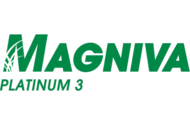Ensiled forage quality affects the subsequent intake by ruminant animals. Silage can represent a large portion of the ration — up to 90% in some cases. Therefore, it’s critical dry matter (DM) intake is maximized using the highest quality ensiled forages to achieve optimal ruminant livestock performance.
The following are important factors that affect silage intake:
- Dry matter content: Field-wilting of forage may raise intake if wilting time is less than 24 hours. Extended wilting times are to be avoided as they reduce crop digestibility, and therefore, negatively influence intake. Target DM ranges vary somewhat between crops and types of storage structure.
- Neutral Detergent Fiber Digestibility (NDFd): This is the primary influencer of potential DM intake and subsequent ruminant animal performance. Typically, it’s referenced as NDFd in 30 hours or NDFd-30. The optimal range varies within crop types. High NDFd-30 values — coupled with a good digestibility-rate value — are the key to high ensiled forage inclusion rates and higher ration DM intakes. Timely cutting programs at the correct stage of plant growth, minimal wilting losses and efficient anaerobic ensiling techniques are essential for a high NDFd-30.
- Nitrogenous constituents: A high ammonia-nitrogen (NH3) value — calculated as a percent of the total crude protein (CP) content — is a laboratory estimation for fermentation in ensiled green crops (such as grass, alfalfa, sorghum, etc.). Generally, up to 10% NH3 as CP is a satisfactory fermentation, with no major negative effect on intake expected. A value excess of 15% NH3 as CP indicates poor fermentation, a high butyric acid content and the potential for greatly reduced intakes.
- Organic acids: Acetic acid content up to 5% of the silage DM from a strain specific buchneri fermentation pathway does not negatively influence DM intake. However, acetic acid from fermentations caused by Clostridia or Enterobacteria are associated with lower intakes and depressed ruminant performance. Sometimes small amounts of propionic acid are found in analyses, (<0.3% DM) but this does not affect intake.
- Alcohols: Generally, residual ethanol contents in silages are low (<1% DM). However high ethanol contents (2 to 4% DM) are often indicative of wild yeast activity. Higher ethanol contents in ensiled forages are seen as a “negative” for intake potential and rumen performance. Occasionally a low amount of unusual alcohols and esters may be detected. This is often indicative of an Enterobacteria-dominated fermentation with low intake potential.
- Particle size: A relatively short forage chop length allows for better compaction, a faster fermentation and a higher intake potential. However, shorter chop lengths can reduce chewing time in ruminants, which, in turn, can reduce saliva flow and the buffering capacity of the rumen.
How to Prevent Feed Intake Issues
Good management is required to create high-quality silage:
- Harvest silage at the right maturity and dry matter (DM)
- Use a research-proven forage inoculant
- Pack the forage well
- Cover and seal the storage structure
- Manage feedout well
- If spoiled silage is identified, discard it. Feeding spoiled silage can result in depressed intake and animal health challenges.
How Forage Inoculants Can Boost Feed Intake:
- Improving silage fermentation, resulting in lower concentrations of acetic acid, ammoniacal nitrogen and alcohols
- Enhancing aerobic stability, particularly with high DM silage
- Creating better digestibility by raising plants’ cell wall degradation, particularly when inoculants with enzymes are used









